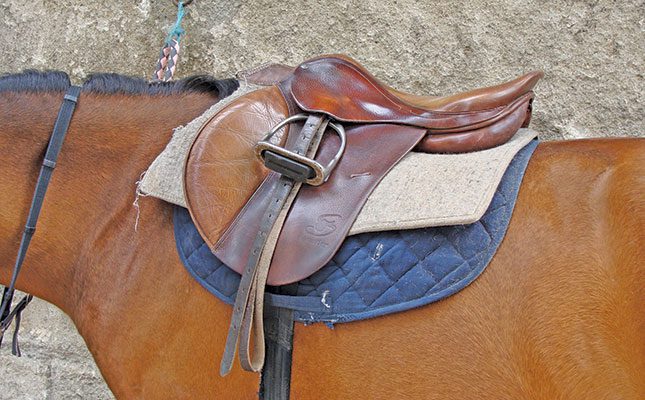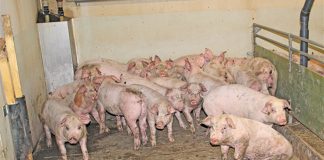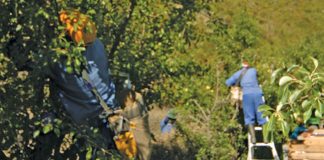
Photo: Wikimedia Commons
Chronic back pain can progress very slowly and it may be a long time before it is diagnosed. In some cases, it is only discovered when the horse performs a manoeuvre incorrectly.
For example, an instructor may tell a rider to “canter a 20m circle and change legs through the trot in the centre of the arena”. The rider canters a neat 20m circle to the left, changes to a trot before the centre, and asks the horse to canter to the right.
Suddenly, the horse falls over its feet, becomes disunited, and throws its head around. The rider may also notice that the horse is unbalanced at the canter, or even at the trot.
This behaviour may be due to chronic pain in the horse’s lower spine, which makes it difficult for the animal to bend its body properly when ridden in a circle.
Chronic back pain can also explain sudden shying or bucking in a horse that was previously calm and easy to ride.
Yet another sign is that the horse may hold its head too high and stick its nose out while on the move.
This may be more obvious during lunging, when it tends to fall in, toss its head, hollow its back, or change gait unexpectedly.
Chronic lower-back problems are often seen in horses that are over 10 years old and used in jumping, eventing or dressage. Usually, the issues emerge over a number of months or years, and thus are not immediately apparent.
Most of the problems are the result of inflammation or degeneration of the intervertebral discs. They may be seen on X-rays as irregularities, especially in the region of the spine where the thoracic and lumbar vertebrae meet.
Determining the source Sometimes, an owner can locate the source of pain by gently massaging (palpating) the horse’s spine on both sides between the withers and the pelvis.
This type of massage is often routinely included when a veterinarian examines a horse for insurance purposes.
If the lower back is the source of the pain, the horse will duck or flinch when the painful section is palpated. When the horse trots out, a ‘shifting lameness’ may be evident. In other words, it will be lame in different legs at different times. It may also ‘bunny hop’ when encouraged to go forward in a trot or canter.
There have been considerable advances in the type of examination specialist veterinarians use to confirm spinal injuries that cause back pain. Local spinal analgesia is probably the first step, followed by bone scans or an ultrasound.
Causes of pain
Lower-back pain can be caused by supraspinous ligament desmitis, osteoarthritis of the intervertebral facets, or something as simple as bruising caused by an ill-fitting saddle.
Once the diagnosis has been made, there are a few basic steps to recovery. The veterinarian may prescribe injectable or oral painkillers for a few days. He or she may also order extracorporeal shockwave therapy and targeted massage, which are often successful.
However, in the long term, specific exercises and riding routines, a well-fitting saddle and a balanced rider are needed. It may mean that a jumper, dressage horse or eventer has to be downgraded and gradually worked up again after following a long-term rehabilitation programme.
Dr Mac is an academic, a practising equine veterinarian and a stud owner.











